664 Collins St Media Wall lights up with Swinburne Digital Design
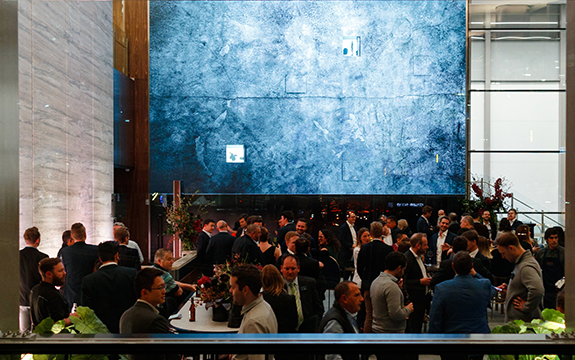
In Summary
- Phase One of 664 Media Wall project now live
- Digital concepts reference weather patterns, climate change and the cosmos
- Distinctive works unite construction industry and academia
Swinburne student works at 664 Collins Street went live at a gala opening event celebrating the collaboration between Swinburne, Mirvac and Grimshaw Architects.
Bringing the construction industry and academia together, the distinctive works by Swinburne digital design students on the massive media wall screen represent Phase One of the 664 Media Wall project.
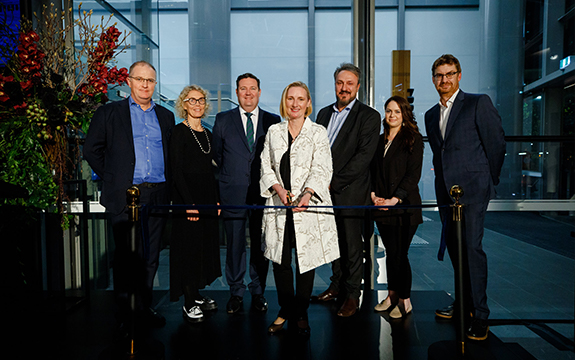 From left: Ashley Hood, CEO, Nexus Mutual; Jane Burry, Dean of Design, Swinburne University; Brendan Britten, Managing Partner, Pitcher Partners; Susan Lloyd-Hurwitz, CEO and Managing Director, Mirvac; John Koutsodontis, VP Fujitsu; Catherine Hart, Workplace Lead, AGL and Neil Stonell, Managing Partner, Grimshaw - photography by ImagePlay
From left: Ashley Hood, CEO, Nexus Mutual; Jane Burry, Dean of Design, Swinburne University; Brendan Britten, Managing Partner, Pitcher Partners; Susan Lloyd-Hurwitz, CEO and Managing Director, Mirvac; John Koutsodontis, VP Fujitsu; Catherine Hart, Workplace Lead, AGL and Neil Stonell, Managing Partner, Grimshaw - photography by ImagePlay
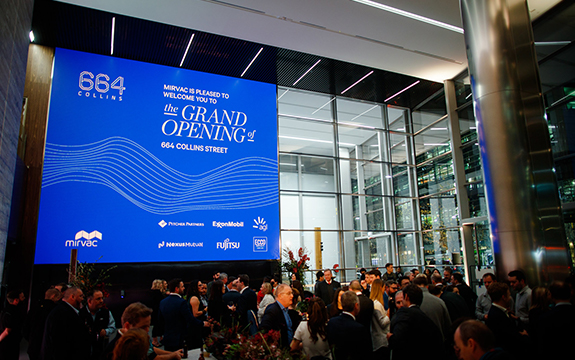 Celebrations at the Media Wall launch, photography by ImagePlay
Celebrations at the Media Wall launch, photography by ImagePlay
The large-scale LED screen will present the works until later this year when Phase Two of the digital project is launched. Mirvac, Grimshaw Architects and Swinburne share the common goals of enriching communities. They are championing the social and environmental issues of the public realm.
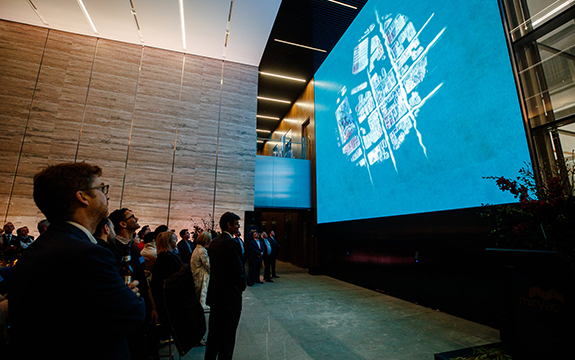 Windy City by Kaliopi Georgio, photography by ImagePlay
Windy City by Kaliopi Georgio, photography by ImagePlay
Support to establish the interdisciplinary collaboration was made possible through Swinburne’s Research Institute Seed Grants program. It connected experts in data visualisation, architecture and digital media design.
Once the design team was created, weekly progress meetings with Swinburne academics and final year students in digital media design kept the project on track. Working to the design brief, 'Rendering the invisible, visible', Mirvac and Grimshaw played an active role in Swinburne design studios to review the student work.
The student design works align with the technical and conceptual rigour required for a high-profile industry project at the public interface.
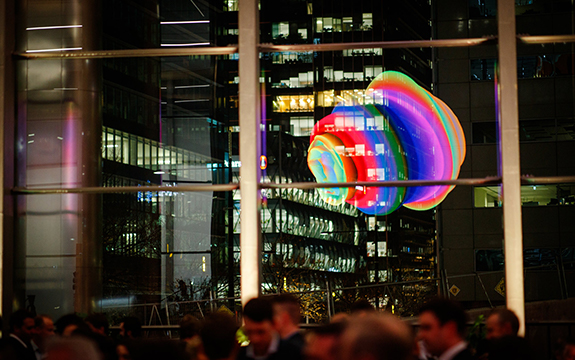 Reflected image of Heart of 664 Collins Street by Jeppe Emil Kjoller, photography by ImagePlay
Reflected image of Heart of 664 Collins Street by Jeppe Emil Kjoller, photography by ImagePlay
“The student concepts are stories from sources as diverse as the sustainable performance of the building to tales of human bravery. The works engage with urban mobility and an audience at work and on the move in the heart of the city, using dynamic, screen-based media for storytelling for people passing by and within the 664 Collins Street foyer space,” says Swinburne Dean of Design, Professor Jane Burry.
Sustainability is a core focus of the digital works and is a core value for Mirvac and Grimshaw Architects. The digital concepts reference weather patterns, climate change, the cosmos, biological systems, building data, macro-photography, sensor driven visualisations and visualisations of social network traffic.
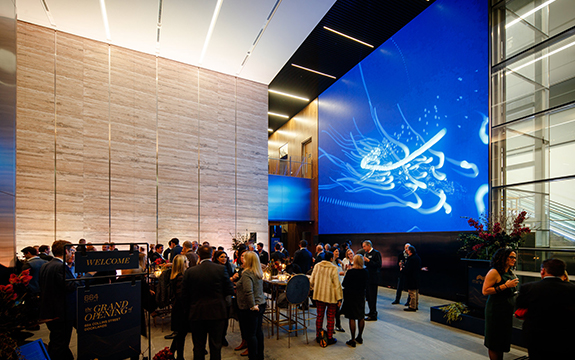 Rhythm of Emotions by Mitchell Arbuckle, photography by ImagePlay
Rhythm of Emotions by Mitchell Arbuckle, photography by ImagePlay
In support of sustainability, a more literal representation in the works was the extensive use of black backgrounds, as the LED display of white consumes more energy.
The student works were created in an iterative design process guided by Emotional Goal Modelling, an agent-based approach developed by Swinburne. The process involves using emotional goals to identify, represent and evaluate high level abstractions of digital media design processes.

